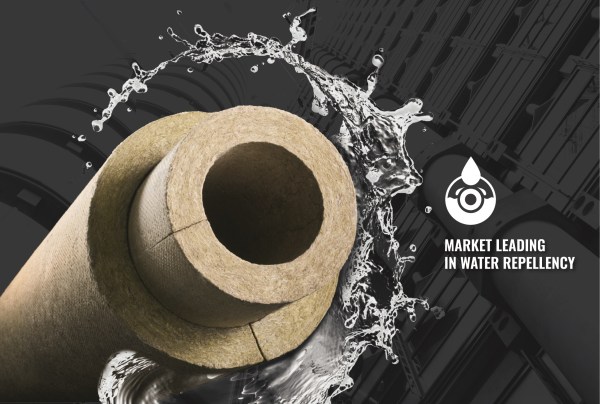How pipe insulation solutions can increase cost-effectiveness and energy efficiency
John Watt is the National Industrial Sales Manager at Paroc, a leading manufacturer of insulation solutions for industrial processes, marine and offshore industry, HVAC systems and the OEM industry. John regularly advises industrial leaders and installers about the best insulation solutions and techniques to protect pipes and extend their lifecycles. He shares his insights below.
“One effective way for organisations to improve their sustainability, environmental footprint and long-term resilience is to invest in water repellent insulation like stone wool. A superior water repellent insulation product offers cost and energy savings, plus a longer pipe lifecycle thanks to its contribution to the prevention of corrosion under insulation (CUI). It’s a product that all stakeholders throughout the supply chain (installers and end-users alike) would do well to consider thanks to the ease-of-install, maintenance costs, personnel protection, noise reduction and energy efficiencies.
Reducing the risk of CUI
CUI is one of the biggest challenges that our industrial customers must proactively combat. It occurs when liquid water enters insulation and reacts with pipework. This makes it particularly dangerous and costly, as maintenance teams won’t be able to see the damage to a pipe system until it’s too late. By then, significant energy losses could have occurred, the cost of repair will have increased, and personnel could be injured. 40 to 60% of all pipe maintenance costs are due to CUI, amounting to billions of dollars in unnecessary costs every year.
When installing new insulation, therefore, it pays to ensure pipework is as protected as possible. Water repellent insulation gives added resilience against liquid water. Not only does this offer peace-of-mind, but maintenance work will not have to be carried out as regularly and the lifetime of the pipe will dramatically increase.
Meeting the highest standards
It’s worth considering insulation products that have been tested by third-party laboratories. This will tell you how effectively a water resistant material will perform. Depending on your plant’s location, look for products that are certified according to European (EN), British (BS) or American (ASTM) standards – ideally all three. The toughest requirements on the market (EN13472) currently require water absorption of no more than 1KG/M2 but market-leading insulation products have 10x less than this (0.1KG/M2).
Installation considerations
The conditions around your installation will affect how well it performs. Ideally, the insulation solution should repel water at temperatures of up to 300 °C. Short-term protection against water exposure can help installers during heavy rain as additional protection may not need to be set-up around the installation. This saves time and resources and helps to cut installation time.
Depending on where insulation is being installed, it is important to consider if the product is safe to use during painting operations. Paroc is certified as safe to use according to the requirements of the coating compatibility standard VDMA 24364.
Lowering lifetime costs
Lower insulation lifetime costs can be achieved through investing in products with open-cell structures. This allows bulk water to drain away rapidly and for vapour to dry out naturally, prolonging the life of the insulation and reducing the risk of leaks and fractures.
A wide range of products
A final consideration should be around the length and thickness of the insulation required. Longer lengths will save on installation time, as will pre-formed bends. Some insulation solutions on the market can provide the thermal benefits of double-layer insulation in one layer. Compared to traditional double-layer installations, the time to fit this solution is cut by 30%.
As the temperature of the pipes being protected rises, so too will the thickness of the insulation. This will protect on-site staff as well as save more energy, prevent thermal losses, and lead to significant cost savings. To provide the greatest flexibility with an installation, look for a manufacturer that offers a wide range of pipe section sizes and thicknesses. Also, pre-formed segments and bends complete the package and can offer significant installation time reductions.
Consider added value
Beyond the fundamental features required of insulation, there are some additional features that should be considered depending on unique site needs. Investing in a stone wool insulation, for example, comes with additional fire safety benefits thanks to the non-combustible material. If fire safety is a key priority, look for products that are classified in Euroclass A1 – the highest class of fire performance for building material.
Insulation with a porous fibre structure and high density is extremely effective in reducing noise pollution. This offers a more pleasant working environment. Likewise, looking at products that remain environmentally friendly throughout their lifecycle, without using chemicals that impede recycling, will further boost sustainability.
Insulation that lasts
Every insulation will be unique to a plant’s needs, so it’s worth looking at solutions that offer great flexibility and choice. It is so important that your insulation investments can stand the test of time – so seek out solutions that are designed with durability and sustainability at their core – products that have been tested by third-parties against the highest standards, to provide the most effective levels of protection.”
For further information please visit the paroc website, or email paroc.uk@owenscorning.com.
























































































































